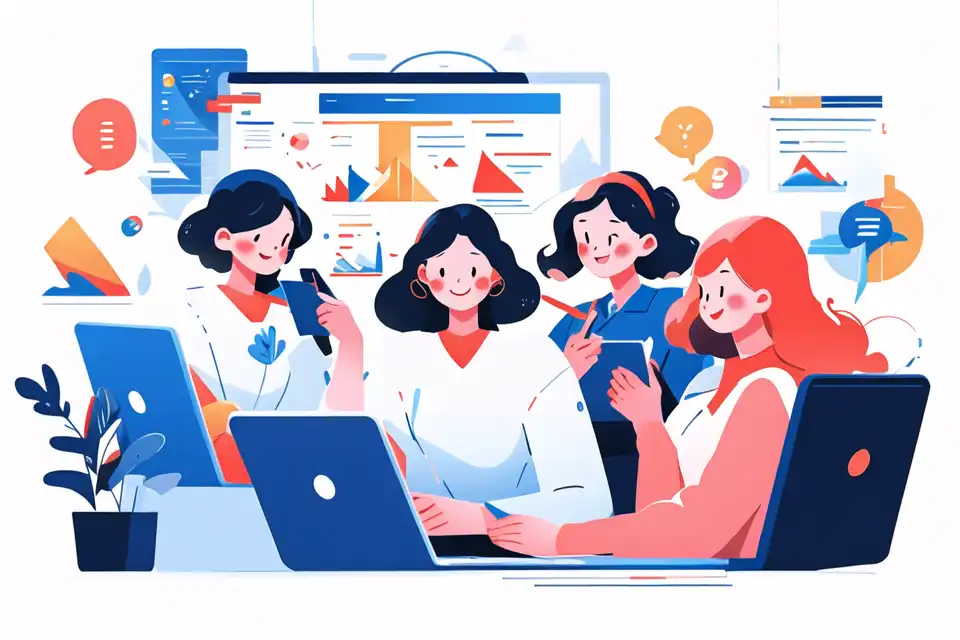How to Discuss Personal Development Plans Professionally
Master the art of professional communication in business settings with expert guidance. Learn how to discuss personal development plans professionally.
Try Lark for Free
Effective professional communication fosters collaboration, fosters a positive work environment, and paves the way for individual and organizational growth. In this article, we delve into the intricacies of discussing personal development plans professionally, offering valuable guidance and real-world examples to enhance professional conversations and career development.
Why is it important to understand how to discuss personal development plans professionally
Gaining insight into the significance of discussing personal development plans professionally is crucial for effective communication and mutual growth within the professional landscape.
- Professional Image: How individuals present themselves when discussing personal development plans reflect their professionalism and commitment to growth.
- Career Advancement: Clear and professional communication during discussions related to personal development plans can lead to career opportunities and progression.
- Relationship Building: Open and professional discussions on personal development plans foster positive relationships with supervisors, mentors, and colleagues, enhancing collaboration and support within the workplace.
The following section details the practical examples of dealing with discussing personal development plans professionally, providing an in-depth and relatable understanding of this significant aspect of professional development.
Use Lark Messenger to elevate your team communication.
Practical examples of dealing with how to discuss personal development plans professionally
Example 1: nervously discussing personal development plans with a supervisor
Example 1: nervously discussing personal development plans with a supervisor
-
Scenario: You're in a meeting with your supervisor to discuss your personal development plans, but nervousness and uncertainty hinder your ability to communicate effectively.
-
Common Mistakes: Rambling, lack of clarity, or appearing unprepared, which may convey a lack of commitment and focus.
-
Best Expression: "I have taken the time to self-assess and believe I can add more value by enhancing my project management skills."
-
Explanation: By clearly articulating a specific area for development and expressing a proactive approach, individuals can present themselves confidently and professionally.
Example 2: sharing personal development plans with a resistant team member
Example 2: sharing personal development plans with a resistant team member
-
Scenario: Despite your efforts, a team member is resistant to discussing personal development plans, creating an obstacle in fostering a collaborative and supportive environment.
-
Common Mistakes: Pushing too hard, lacking empathy, or adopting a confrontational approach, which may strain professional relationships.
-
Best Expression: "I understand change can be challenging, but my development would support our team's goals."
-
Explanation: By acknowledging and addressing potential obstacles with empathy and understanding, individuals can bridge the communication gap and demonstrate a desire for collective growth.
Example 3: discussing personal development plans with a mentor or coach
Example 3: discussing personal development plans with a mentor or coach
-
Scenario: Seeking guidance and support from a mentor or coach to align personal development plans with career aspirations and organizational expectations.
-
Common Mistakes: Being overly dependent, lacking initiative, or dismissing constructive feedback, hindering the growth and learning opportunity.
-
Best Expression: "I appreciate your guidance and commit to actionable steps for my professional growth."
-
Explanation: Acknowledging and valuing the guidance provided while demonstrating commitment and accountability can strengthen the mentor-mentee relationship and foster personal development.
Example 4: explaining personal development plans during a performance review
Example 4: explaining personal development plans during a performance review
-
Scenario: Presenting personal development plans during a performance review to align aspirations with career progression and organizational objectives.
-
Common Mistakes: Defensiveness, lack of documentation, or overlooking achievements, which may diminish the impact and clarity of the communicated plans.
-
Best Expression: "I am eager to align my development with the company's strategic goals and contribute significantly."
-
Explanation: By emphasizing alignment and contribution, individuals can communicate their commitment and value to the organization effectively.
The examples provide a practical understanding of professionally navigating discussions on personal development plans, highlighting common challenges and best practices for addressing them.
What are the consequences of not knowing how to discuss personal development plans professionally
Understanding the potential consequences of ineffective communication during discussions on personal development plans is crucial to grasp the significance of professional approach and communication.
- Stagnation: Inability to effectively communicate personal development plans can lead to stunted career growth due to misalignment with organizational objectives and missed opportunities for advancement.
- Misunderstandings: Communication gaps and ambiguity in discussions may lead to conflicts, missed opportunities, and hindered collaborative efforts within the organization.
- Professional Reputation: Poor communication during discussions on personal development plans can tarnish an individual's professional image and credibility, impacting potential career opportunities and relationships within the professional sphere.
These consequences underscore the importance of mastering professional discussions on personal development plans and the implications of ineffective communication.
Learn more about Lark x Communication
Use Lark Messenger to elevate your team communication.
Methods of phrasing how to discuss personal development plans professionally
Using "I" Statements
Expressing personal goals and plans using "I" statements, emphasizing ownership and accountability, thereby effectively communicating individuals' commitment and responsibility towards their development journey.
Active Listening
Active listening during discussions on personal development plans, demonstrating empathy and receptiveness to feedback, fosters a collaborative and supportive environment, enhancing the quality of communication and relationship dynamics.
Clarity and Conciseness
Presenting personal development plans and progress updates in clear and concise terms ensures understandability and promotes effective communication, contributing to mutual understanding and alignment with organizational objectives.
Do's and dont's when you don't know how to discuss personal development plans professionally
| Do's | Don'ts |
|---|---|
| Seek feedback and guidance | Confront or dismiss feedback |
| Be open to constructive criticism | Overwhelm with unnecessary details |
| Document and track progress | Make excuses or blame others |
The table above provides a clear distinction between the do's and don'ts, offering concise yet essential guidance for engaging in professional discussions about personal development plans.
Conclusion
Understanding and mastering the art of discussing personal development plans professionally is a crucial component of career development and organizational growth. Effective communication and a professional approach pave the way for individual success and contribute significantly to organizational objectives and collaborations.








